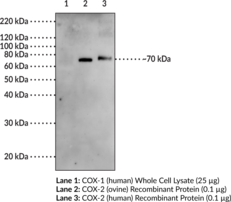Description
Ion channels are integral membrane proteins that help establish and control the small voltage gradient across the plasma membrane of living cells by allowing the flow of ions down their electrochemical gradient.{17533} They are present in the membranes that surround all biological cells and their main function is to regulate the flow of ions across this membrane. Whereas some ion channels permit the passage of ions based on charge, others conduct based on a ionic species, such as sodium or potassium. Furthermore, in some ion channels, the passage is governed by a gate which is controlled by chemical or electrical signals, temperature, or mechanical forces. There are a few main classifications of gated ion channels. There are voltage-gated ion channels, ligand-gated, other gating systems, and finally those that are classified differently, having more exotic characteristics. The first are voltage-gated ion channels which open and close in response to membrane potential. These are then seperated into sodium, calcium, potassium, proton, transient receptor, and cyclic nucleotide-gated channels, each of which is responsible for a unique role. Ligand-gated ion channels are also known as ionotropic receptors and they open in response to specific ligand molecules binding to the extracellular domain of the receptor protein. The other gated classifications include activation and inactivation by second messengers, inward-rectifier potassium channels, calcium-activated potassium channels, two-pore-domain potassium channels, light-gated channels, mechano-sensitive ion channels, and cyclic nucleotide-gated channels. Finally, the other classifications are based on less normal characteristics such as two-pore channels and transient receptor potential channels.{17535} Transient receptor potential cation channel, subfamily C, member 4 (TRPC4), is a human gene encoding a protein of the same name. They are expressed in smooth muscle and endothelial cells where they regulate membrane potential and calcium influx. TRPC4 is activated by G(q)/phospholipase C-coupled receptors, but the underlying mechanism remains elusive.{17697} Studies suggest TRPC4 contributes to axonal regeneration after nerve injury.{17698}
Synonyms: Transient Receptor Potential Canonical Channel
Immunogen: Synthetic peptide amino acids 930-947 of rat TRPC4
Formulation: 100 µg of protein G-purified IgG in 100 µl PBS, pH 7.4, containing 50% glycerol and 0.09% sodium azide
Isotype: IgG2b
Applications: WB, IP, and ICC
Origin: Animal/Mouse
Stability: 365 days
Application|Immunocytochemistry||Application|Immunoprecipitation||Application|Western Blot||Product Type|Antibodies|Monoclonal Antibodies||Research Area


